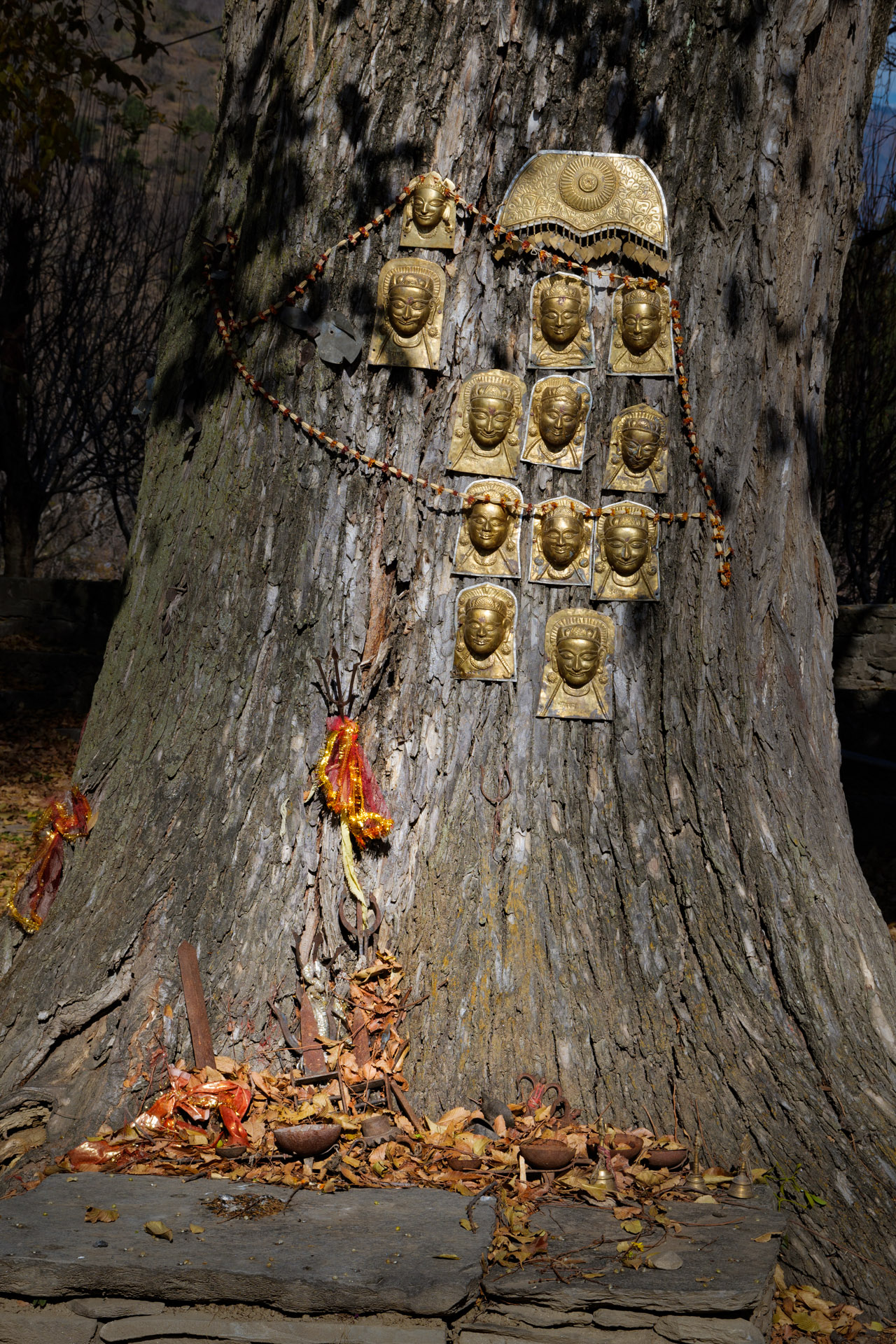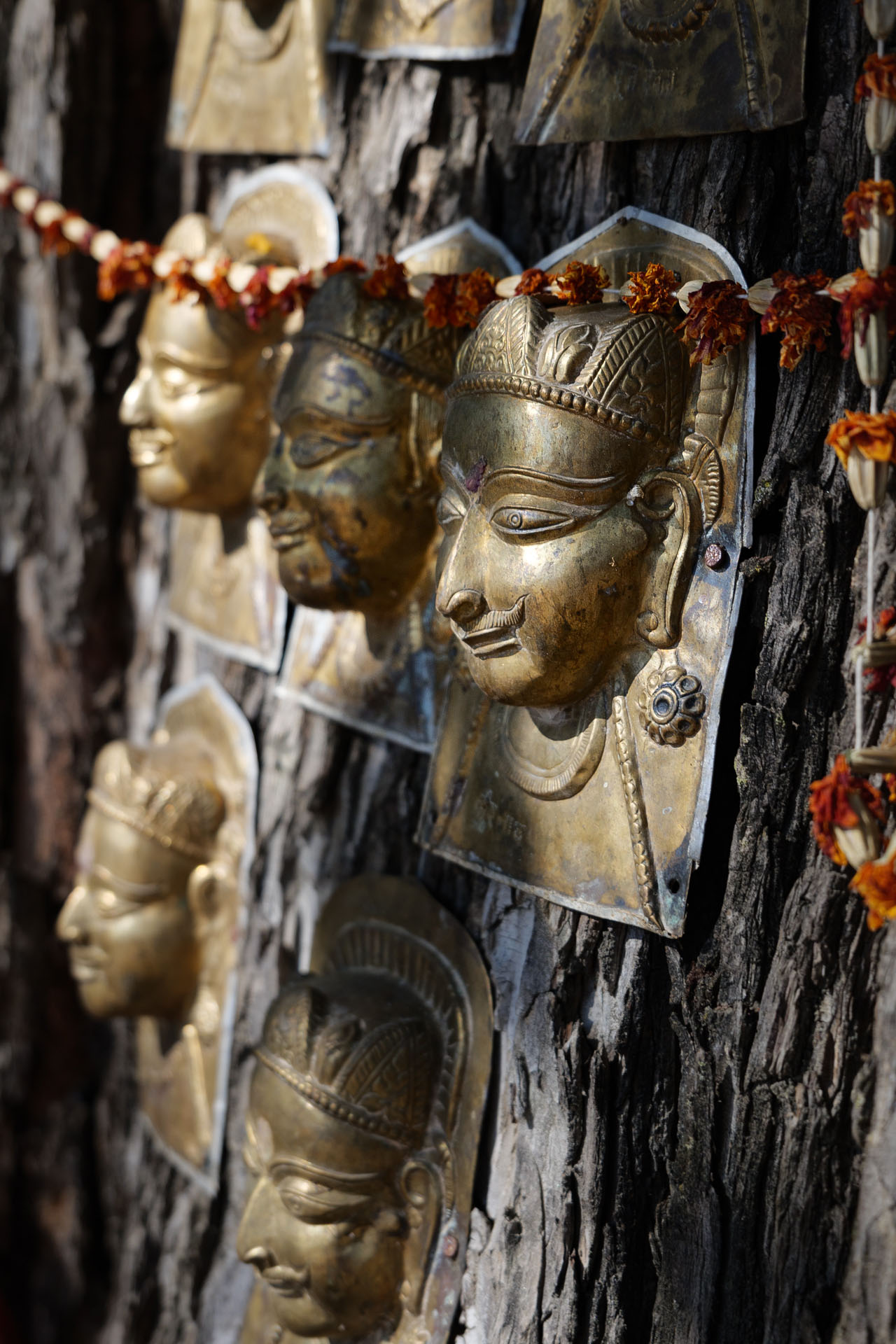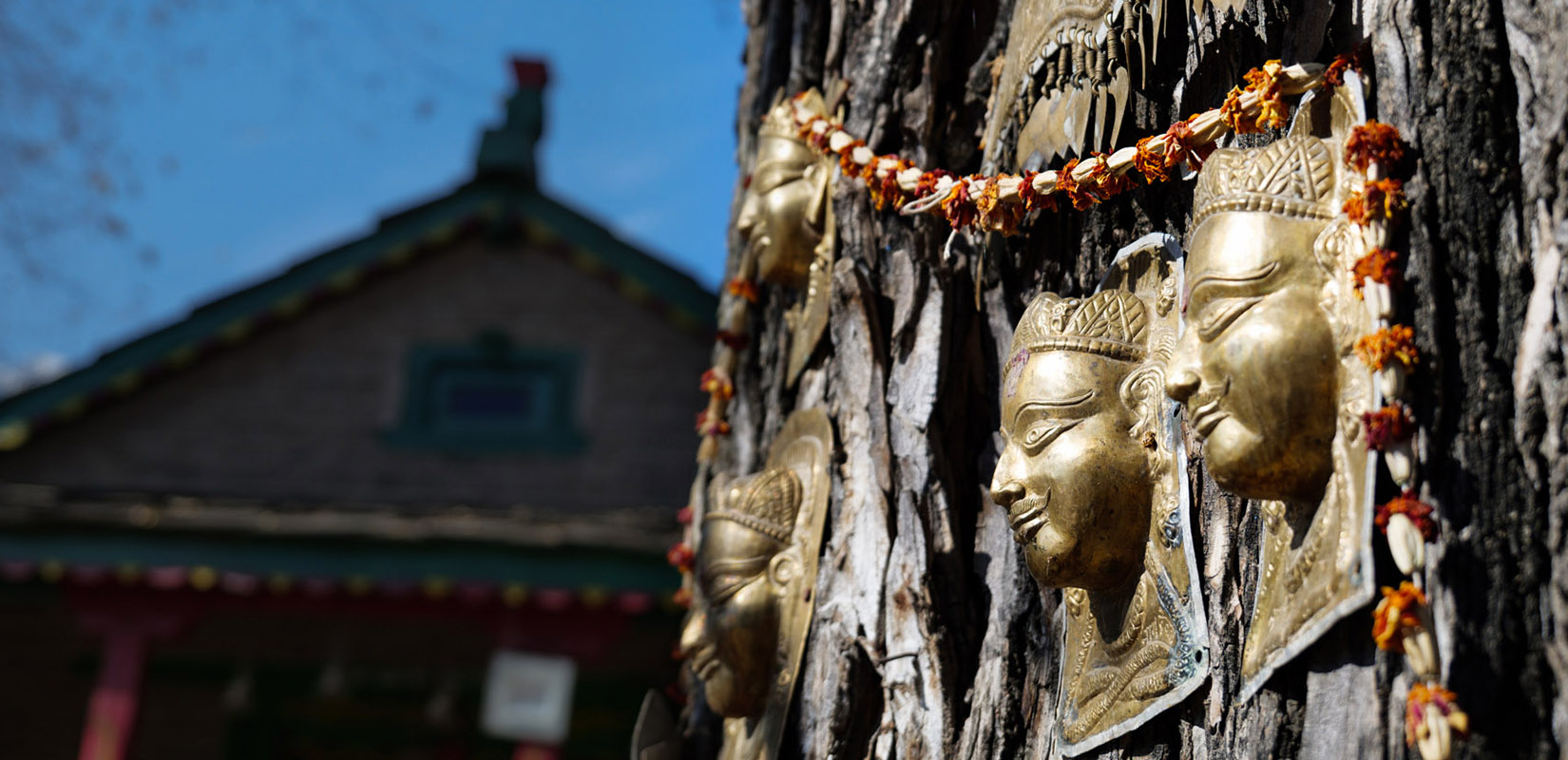Carving in Bandrol
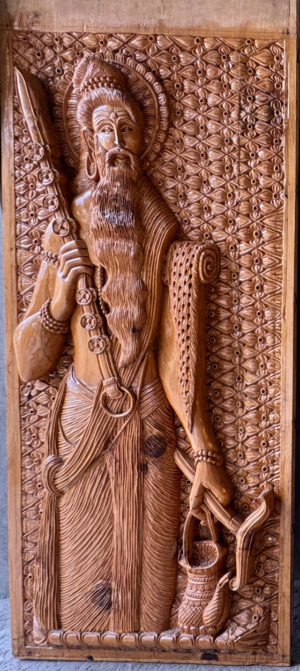
Of the hundreds perhaps thousands of the Devtas in the District of Kullu, many share names and traditions. Here in the Kullu Valley there are many temples to Baba Veer Nath.
Baba Veer Nath is often revered as a powerful yogi, a protector of the region, and a spiritual guardian of the people. His tale, like many other figures in Himalayan mythology, is rich with elements of devotion, miracles, and his connection to the divine. It is said that he was a devout follower of Shiva and that his powers were a blessing from the deity.
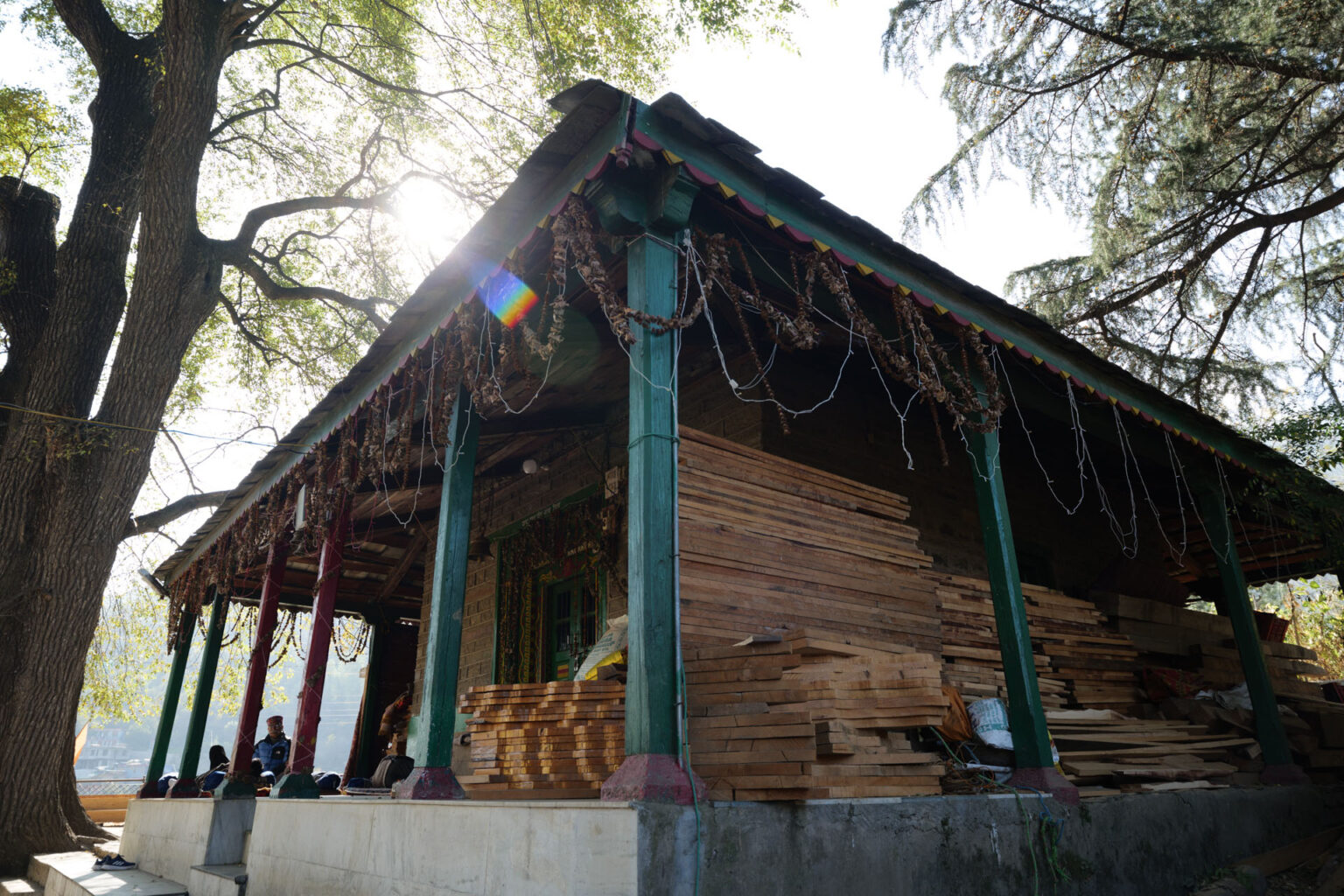
Every few weeks, I along with friends visit the Baba Veer Nath Temple in Bandrol. The old temple is currently undergoing reconstruction, with artisans from Thachi, near Mandi, staying on-site to carve exquisite reliefs for the new structure. This temple will replace the one originally built here around 1975. The project is expected to take a total of three years to complete.
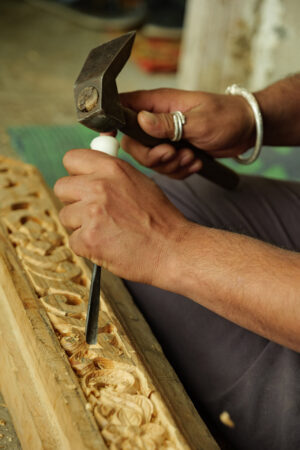
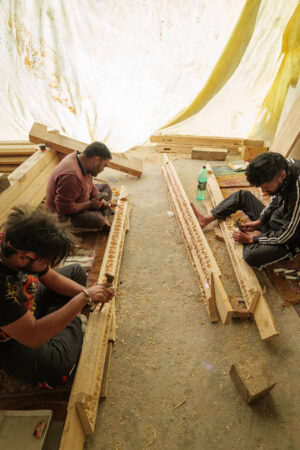
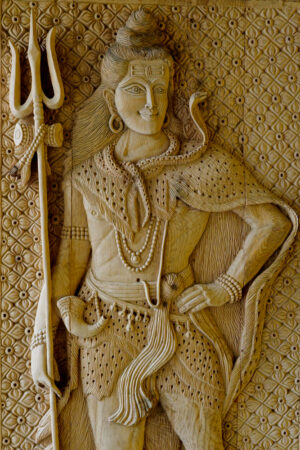
A crew of about 15 men is hard at work, their joyful nature matched only by their remarkable skill. One artisan, in particular, Sonu Bhardwaj, caught my attention as he skillfully handled his chisels. He seems to be the lead carver, meticulously sketching Brahma, onto a six-inch-thick Deodhar plank. Sonu began learning his craft from his father at the age of eight and has since become a master of his art. Along with his two brothers and father, he is contributing to the intricate carvings that will adorn the temple's many wooden blocks.
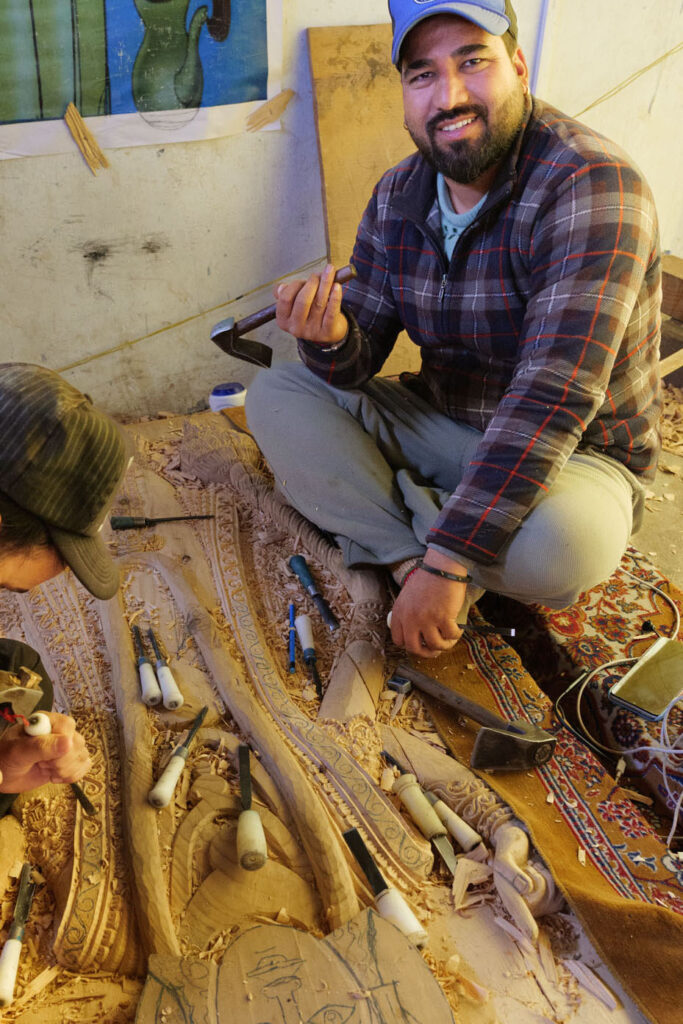
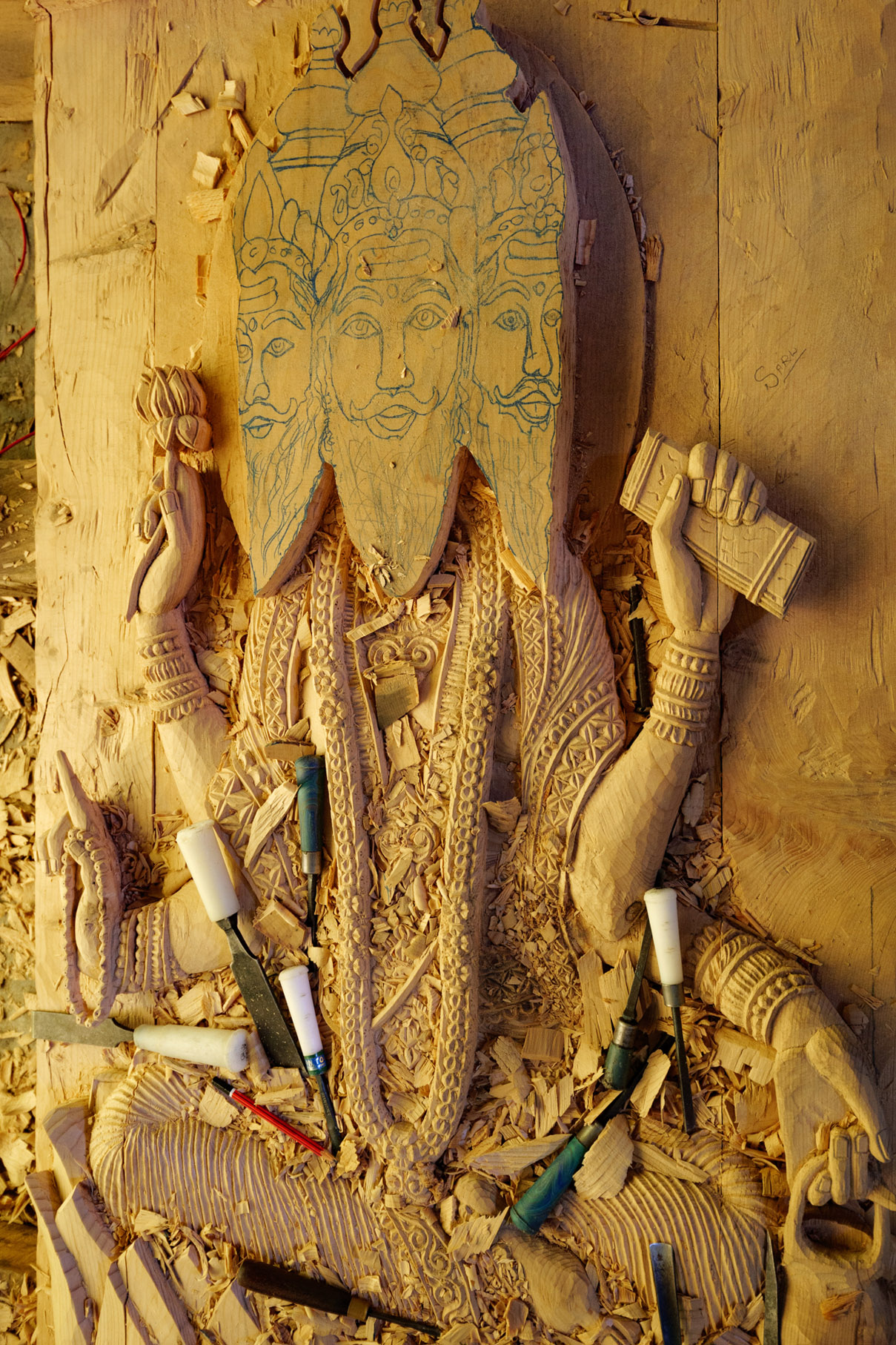
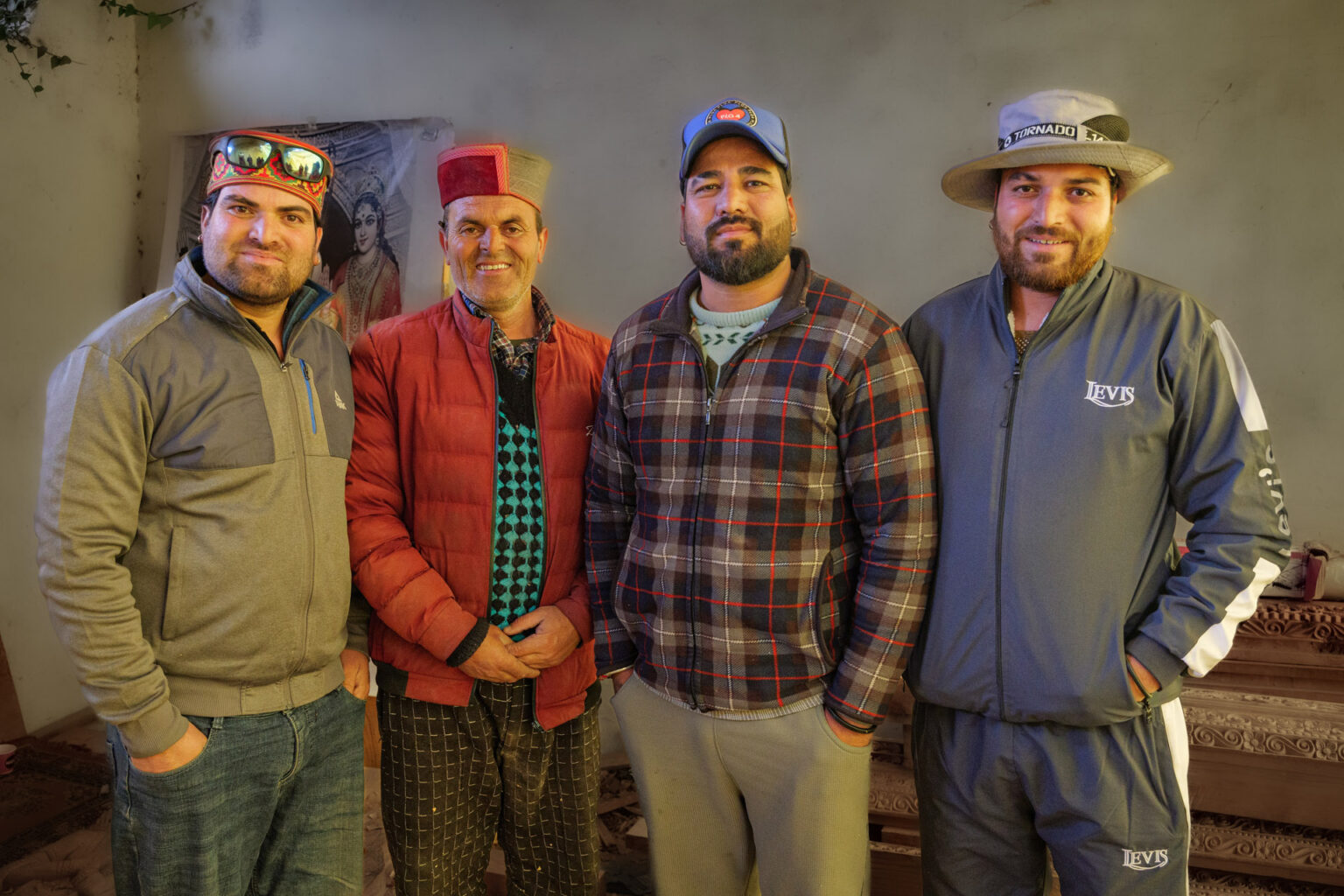
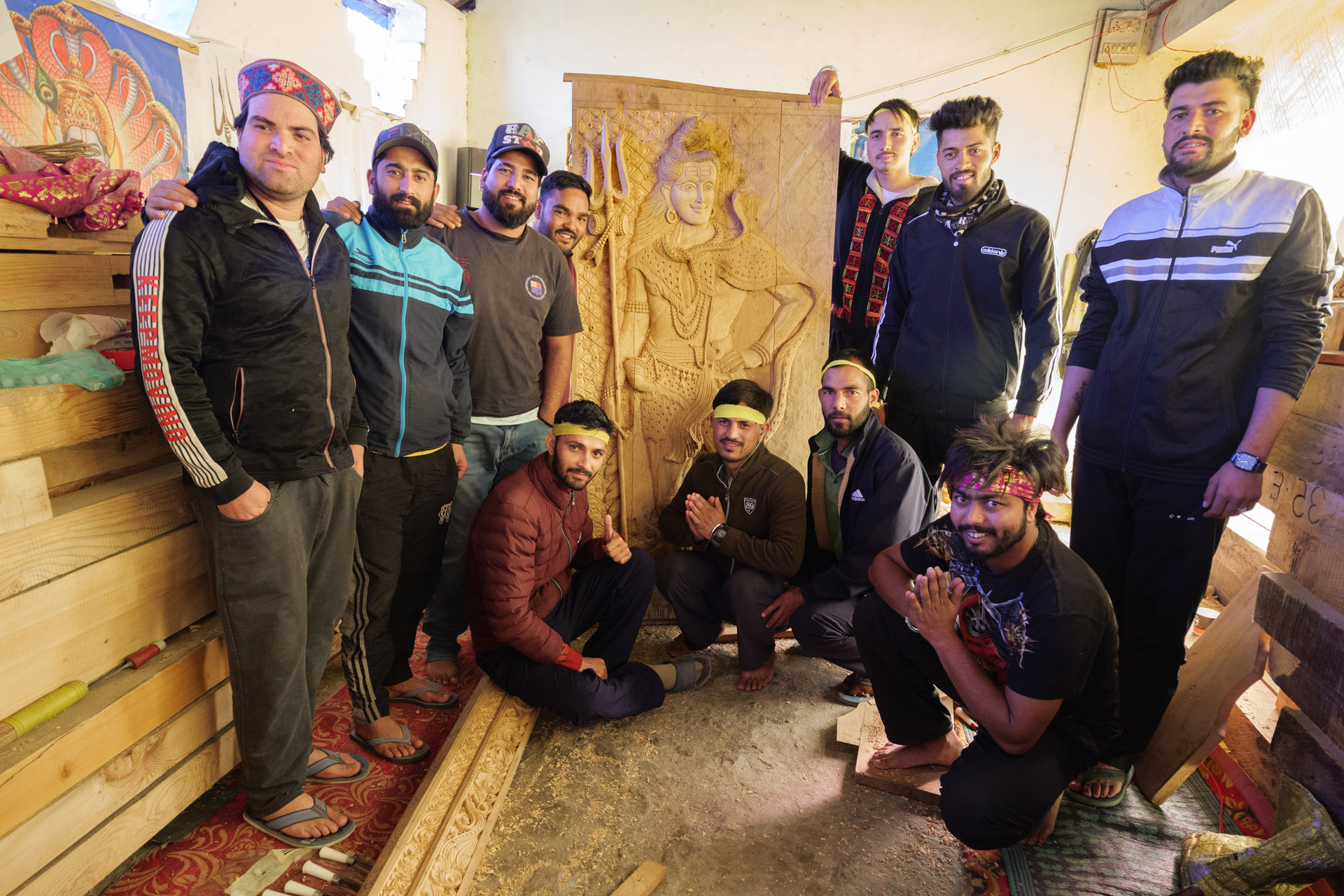
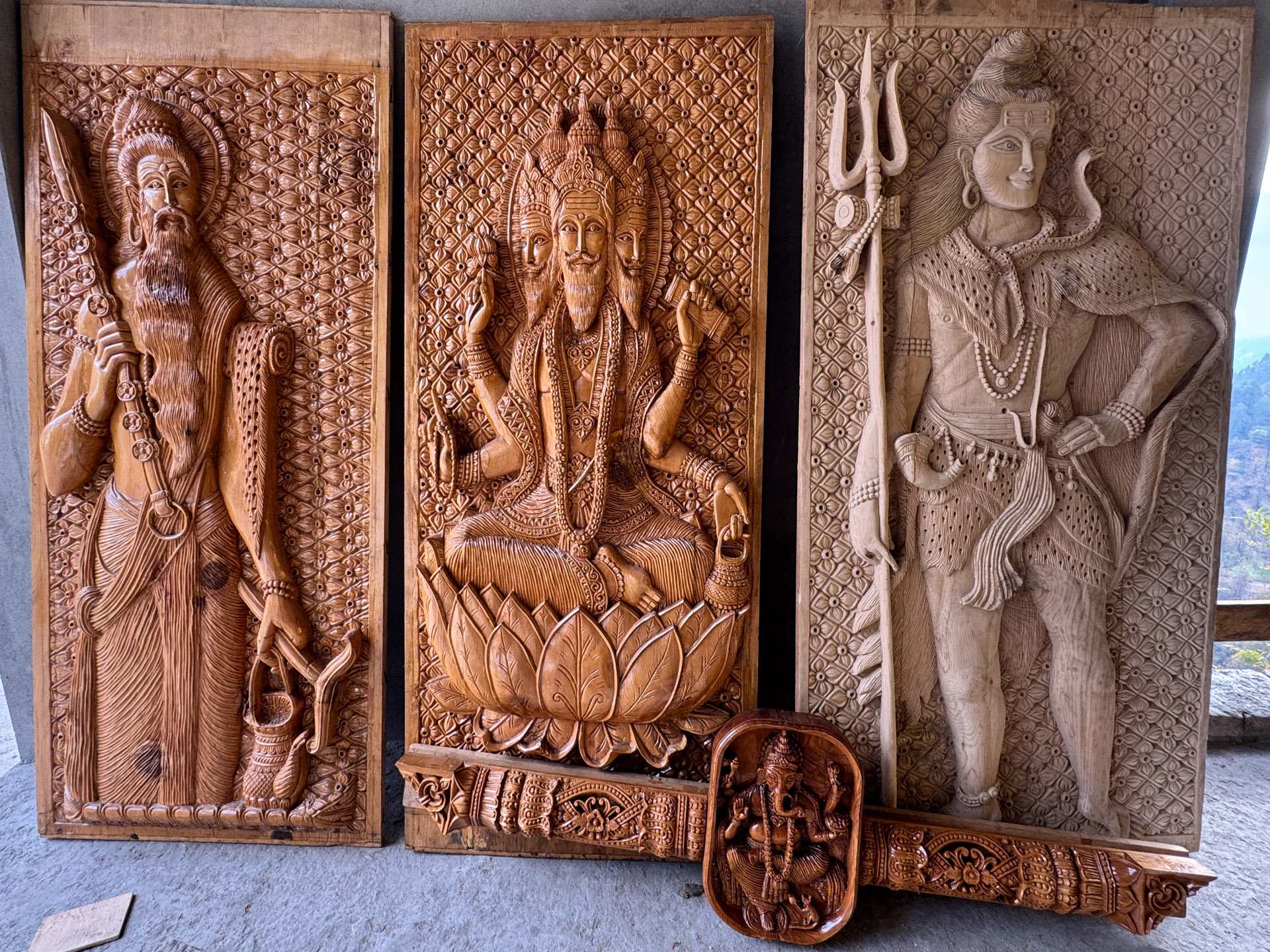
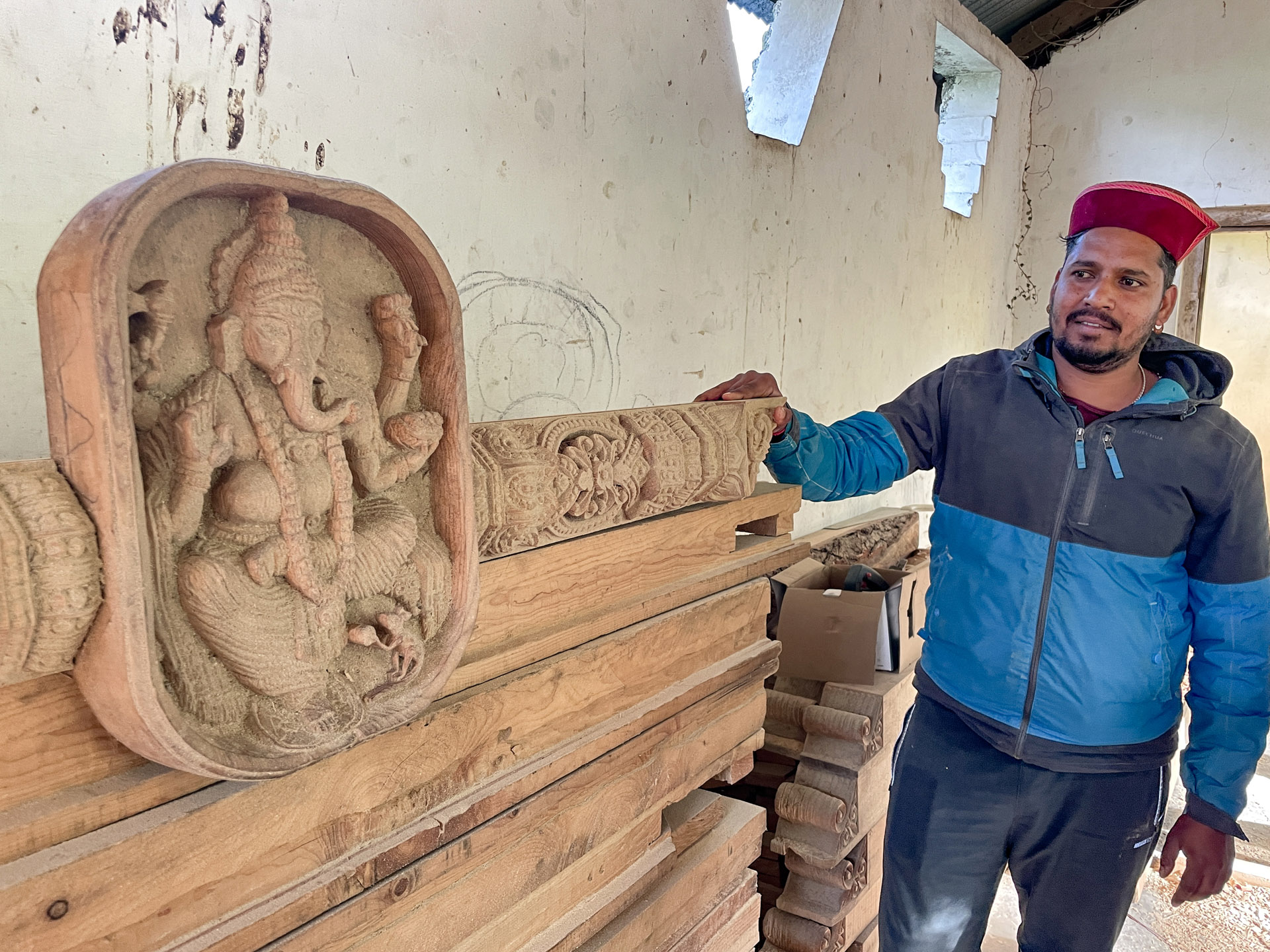
Walking into the temple ground, one can’t help but notice a central tree, a mandir in its own right, covered in beautiful Mohras. One of the devotees once told me that the name of the Devta living in the tree was Chnjanu. One of the things I love about these places that I visit, is that everyone has a story, or even no story at all. Because of this, it is most difficult to document as any documentation implies the sense that tradition is static. Here it is truly a living tradition. Everyone’s story is relevant, each individual lives and experiences through these living traditions.
